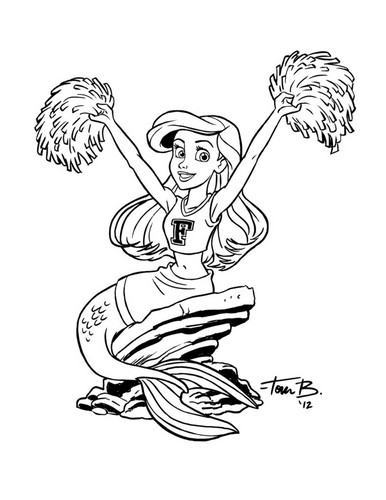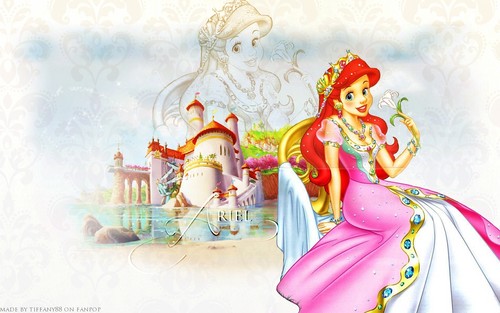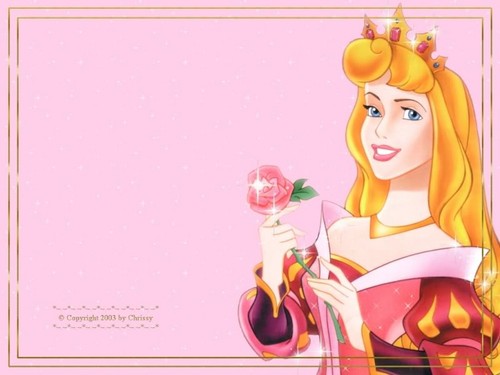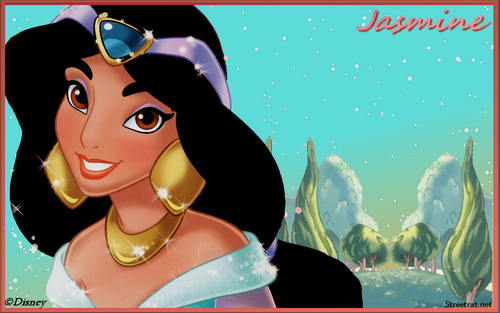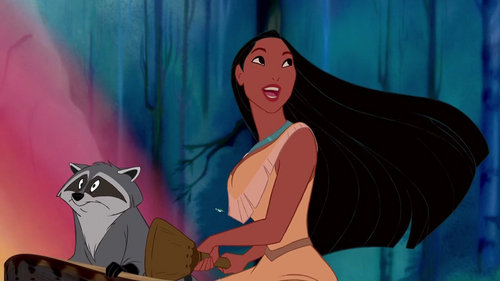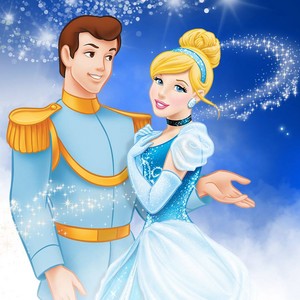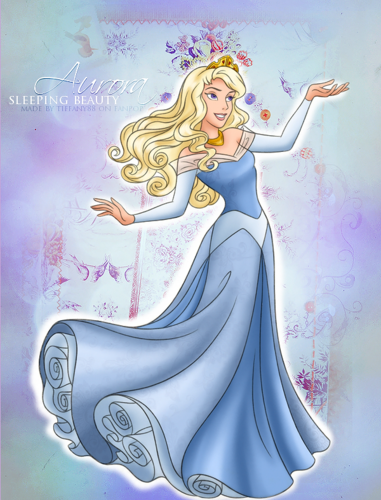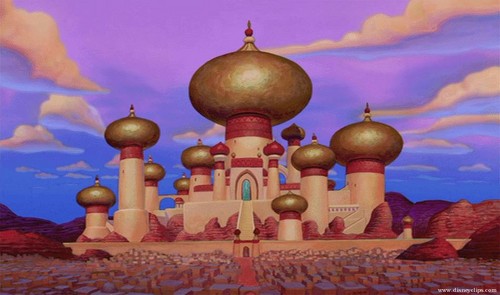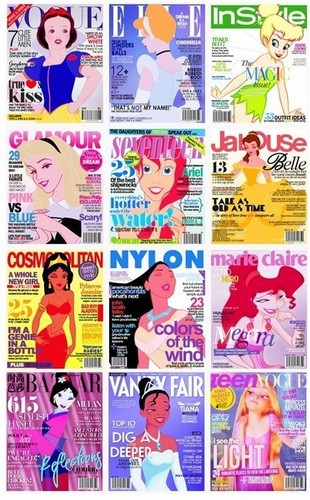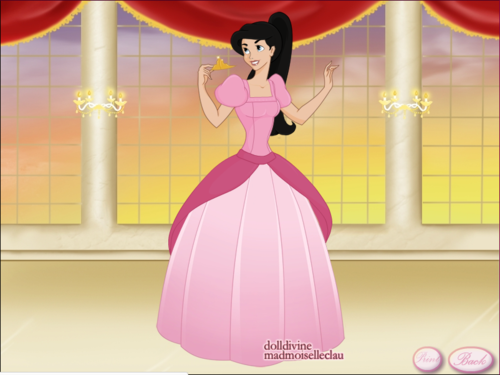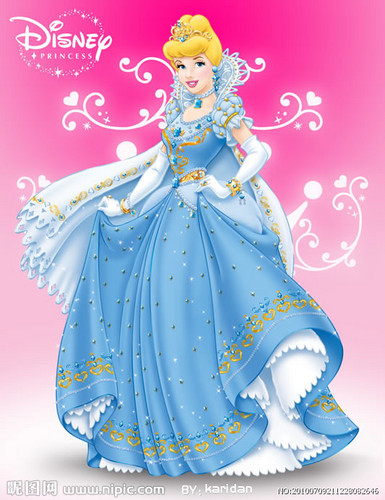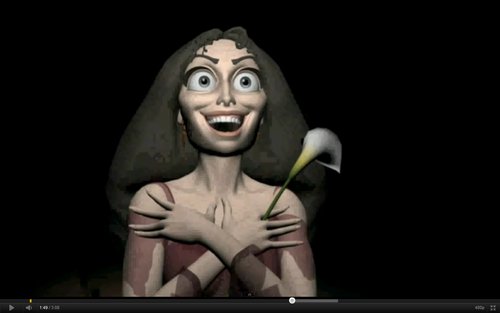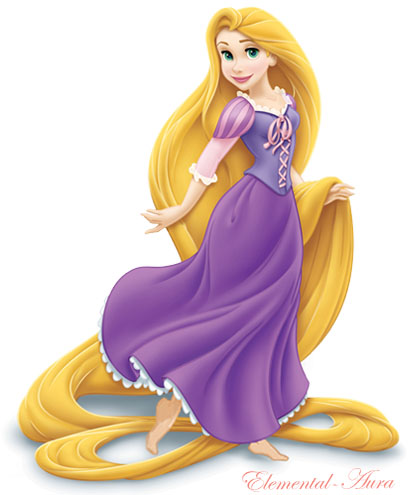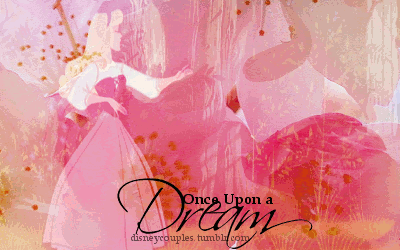Music
At this point it is an toàn, két an toàn to conclude that the âm nhạc is the most prominently outstanding aspect of Frozen. Moreover, the soundtrack, score and presentation of marvelously spectacular and masterfully performed songs are objectively and noticeably superior to those of any of the other phim chiếu rạp pertaining to a so-called “New Era” of Disney such as Princess and the Frog, Tangled, Công chúa tóc xù and Wreck it Ralph. That undoubtedly have their merits and are exceptionally competent and engaging in terms of using âm nhạc to set up a necessary mood. However, are nowhere in the neighborhood of the breathtakingly captivating, emotionally powerful, challenging and mesmerizing creative/artistic endeavor that Nữ hoàng băng giá soundtrack is. “Let it go” specifically meets Disney’s asserted criteria of iconic, rivaling universally beloved and notable musical numbers from phim chiếu rạp like “Aladdin”, “The little Mermaid” and “Lion King”.
Animation
phim hoạt hình was, frustratingly, considerably less detailed in terms of backgrounds, patterns and surfaces that were not nearly as fleshed out and substantially crafted as in case with other Disney’s CGI hits such as Công chúa tóc mây and Brave. Nữ hoàng băng giá phim hoạt hình is too artificial but nonetheless remarkably impressive in regards to elaborately executed facial expressions and conveyance of characters’ emotions.
Elsa and Kristoff in particular showcase a wide and extensive variety of feelings bởi means of very subtle, barely visible yet distinct glances, mimicry and depiction of how the muscles of their faces di chuyển when they were unsettled, distressed, annoyed, exhausted, determined, playful, tired, etc. Portrayal of Anna’s emotional spectrum was less consistent there where her expressions are concerned but the aforementioned flaw was entirely compensated bởi touchingly awkward, distinguishing gestures and a compellingly displayed body language, easily recognizable when compared to actual human movements.
The plot/character dynamics & conflict
Plot narrative is structured around an incredibly important and crucial issue many families with “special” children - and essentially those children themselves as they grow up and have to face and work through/cope with their differences from established societal norms and unfortunate instances of antagonism imposed on them for the mere fact of their uniqueness - are confronted with.
Admittedly, the movie could have provided a thêm thorough insight into Elsa’s psychological struggles and specifically her rehabilitation after years of anguishing, mentally burdening and highly traumatizing isolation harmful impacts of which the movie unreasonably downplayed.
That said, Nữ hoàng băng giá is the first Disney Princess film to address and straightforwardly, without any hesitance hoặc double meanings emphasize the issue of societal rejection not induced bởi someone’s external/outward features that ultimately prompt people to demonize them for both legitimate and invalid reasons. For instance, in case with Beast the ignorance of the villagers and their inherent inability to accept what was conventionally perceived as inappropriate and off putting on the surface nearly cost him a life. Yet Beast’s own lack of consideration and basic decency towards others could have entailed Belle’s father’s death if she hadn’t pursued him and begged Beast to take her captive instead. BaTB narrative largely oversimplified and reduced this premise to a cute moralistic tale of a misguided man being redeemed and reformed bởi tình yêu of a morally superior woman whose consistent patronizing and devoted investment in exposing him to bàn mannerism and Shakespeare resulted in his miraculous revamp both literally and figuratively as though the severity of his mental and anger management issues never existed.
This is NOT what happens in Frozen. Poignantly, Elsa is bound to adjust to her condition and live with it. The movie highlights a commonly misleading manner in which Elsa and Anna’s parents handled Elsa’s uniqueness. Rather than helping their daughter to harmonize and balance out her internal ongoing struggle they insisted that she represses the essence of her capacities. Thus inadvertently depriving a brightly imaginative girl of a formative and valuable opportunity to unleash her creative potential - which came directly from a place of her emotions she was advised to fiercely struggle with and keep undisclosed on behalf of other people’s convenience and safety. Not excluding that of her own sister whose well being has always been Elsa’s dominant priority especially after a terrifying childhood incident she never stopped inwardly blaming herself for.
Ultimate lack of help and support led to total and utter alienation Elsa was meant to relive, on hàng đầu, đầu trang of being emotionally caged and subjected to carrying an unbearable burden of psychological restrains placed on her due to her family’s incompetent and ineffective approach towards the controversy of her unusual abilities and Anna’s obscurity in that respect. The narrative outright acknowledges how tremendously and enormously problematic and destructive the environment Anna and Elsa’s parents created for either of them appeared to be in a grand scheme of things, making both girls miserable.
What further contributes to the morbidness of the situation is the fact that the King and Queen sincerely and genuinely strove to protect both of their daughters. Without recognizing how vital it was for them to maintain a verbal connection which could have helped accustoming to Elsa’s issues and for the latter to learn to handle her mental struggles efficiently. Fulfilling herself bởi indulging in her prominent skills and using them to her own and her sister’s advantage without an incessant paralyzing fear of negative consequences.
It would have undeniably been a thêm constructive method of working towards resolving the problem than separating sisters from each other bởi metaphorical walls of perpetually concealed truths. Until the point when - similarly to the way such issues tend to function for people wrestling with emotional triggers in real life - Elsa’s secret finally backfires immensely resulting in instant societal rejection her parents were unwaveringly preoccupied with not letting happen in the first place.
On the other hand, Elsa was exposed to the same set of choices a person whose deviation from a traditional mold is not embraced/accepted bởi their surrounding gets to face: either being left at mercy of integrally judgmental, implausibly dismissive and condescending society hoặc construct an environment where isolation is still inevitably prevalent but at least bạn can finally attain a long awaited contentment and comfort with yourself. Reveling in your uniqueness, setting your own pace of life and dwelling on your capabilities with no additional concerns about not being perceived as socially acceptable. hoặc worse, ending up inflicting irrevocable and unwanted damage on others (as it already happened once if analyzed from the stand point of the context behind Elsa’s situation specifically).
Anna is an amusingly and overwhelmingly realistic representation of a family member affected bởi the toxicity of faulty methods used to deal with the problems endured bởi the other family member. Nữ hoàng băng giá does an endearingly heartwarming (yes, the pun is completely intended and inserted here on purpose) job examining and drawing a necessary attention to importance of support. Without positioning Elsa as a damsel for the mere fact of needing help after years of persistently ongoing anguish and irreversible trauma imposed bởi continual psychological terror - to the point where she legitimately started considering herself a monster.
The sequence where Anna informs her sister about the latter setting up an eternal winter is particularly powerful and bittersweet. Unconditional optimism and devastatingly immeasurable yearning to offer Elsa a helping hand on Anna’s part equates with a discouraging futility of similar efforts made bởi family members and Những người bạn of people with psychological issues. Because đã đưa ý kiến issues require large amounts of time and không gian to be sufficiently studied and explored bởi the person undergoing and experiencing them.
“You’ll only make it worse!” - this line comes off as outstandingly realistic depiction of a person whose anxiety and emotional escalation have reached an exceeding and dangerous point while someone else is desperately trying to tell them to just miraculously overcome this progressively intensifying internal conflict. Disney certainly deserves a credit for such an unapologetic, unabashedly and brutally honest presentation of the issue.
And obviously, sisterly dynamic is what primarily drives the plot and leads it to satisfying yet ambiguous conclusion: once the society finally exhibits recognition of Elsa’s condition which is no longer repressed hoặc cleverly hidden from the watchful eye of the world she is able to reclaim her tiêu đề as a ruler. Becoming a competent authoritative representative despite not reflecting conventional and highly exclusive/restrictive concepts of appropriate hoặc conforming to designed notions of what is hoặc isn’t acceptable that are based on deeply instilled and unreasonable prejudice. Proceeding to enjoy a delightful and well organized existence bởi the side of her sister who has solidified her loyalty and willingness to stick around through thick and thin.
The villain
Villain “switch” was tritely predictable and utterly contrived not only because the Duke was too much of an exaggerated shady and greedy elderly person a la Principal Guilty from Stripperella but due to obnoxious reinforcement of a heavily unflattering and insufferably outdated “right guy vs. wrong guy” dichotomy the movie unwisely resorted to. Which comes across as considerably unsettling after the brilliant deconstruction of this cliche riddled formula graciously provided bởi “Enchanted” where the heroine doesn’t end up with her initial suitor but a chivalrous, old fashioned Prince is not antagonized for being expressively narcissistic and presumptuous/exceedingly confident. Nor is painted as an inherently cunning, morally corrupt evil schemes plotting pretender in order to uphold the agenda of a yet another male lead with flaws (vastly unappealing - at least to me - trope that significantly diminished the validity and credibility of Beauty and the Beast where Gaston vs. Beast fiasco was forcibly imposed on the audience as a part of it’s patronizing narrative revolving around a “don’t judge the book bởi it’s cover” premise). Speaking of a male lead with flaws…
Romantic storyline
Kristoff is a firmly and paradoxically opinionated anti-social outcast and a willful loner who prefers the company of his inexhaustibly loyal and devoted reindeer Sven. His budding romance with Anna and a fundamental concept their relationship’s evolution was molded bởi - from a fictional stand point - was dangerously close to devolving to the same aggravating contrivance the development of such Disney romances as Giselle & Robert hoặc Tiana/Naveen fell a victim to (and definitely did not initially seem reminiscent of adorably organic journey of unconditional acceptance Rapunzel and Flynn set out on when growing to appreciate, respect and cherish the least appealing and engaging facets of one another. Instead of scolding and nitpicking on each other until the point where one of them hoặc either undergoes a drastic transformation and matches their potential romantic partner’s standard and expectations of a perfect boyfriend/girlfriend material as in case with the majority of Disney pairings that didn’t start as “love at first sight”. What stood out the most about Công chúa tóc mây was the lack of “rehabilitation” arc and two characters starting to fall for each other BEFORE any changes on either part occurred).
Nữ hoàng băng giá featured two avidly individualistic protagonists with diametrically opposing and conflicting mentalities whose worlds collided unexpectedly and under less than natural and casual circumstances. There was a brief moment when I almost expected the movie to throw in an unbearably forced, supposedly poetic line that would make me shudder and cringe the same way “if I can mince bạn can dance” did. This romance mold Disney is inexplicably prone to endorsing is something I’m still having extremely hard time perceiving as compelling. Seeing as the premise of this trope at it’s core basically stands for two people forcing their subjective ideas of entertainment and their internalized outlooks on worthwhile and deserving life style on one another which the narrative unconvincingly passes for character growth and romantic progression. Giselle and Robert did not escape a similar unenviable sloppiness.
Surprisingly, this was not the case with Anna and Kristoff per say. Kristoff’s frustration with certain aspects of Anna’s behavior had little to nothing to do with her personality type and rather was related to HIS lack of experience in regards to social interaction - qualities they coincidentally had in common. Their partnership was based on effective and equal mutual reliance.
"Fixer Upper", despite being arguably the weakest song of the film (and definitely the one that could have been replaced and/or omitted to leave a room for other, higher quality and thêm character driven musical numbers such as "We know better" that unfortunately didn’t make it into the movie) addressed a crucial point Disney doesn’t deliver to the audience through it’s narratives NEARLY enough (often perpetuating the reverse message): bạn cannot fix a person hoặc change them. It IS, however, possible to perceive and firmly grasp the positive, remarkable and admirable underlying layers of them if there is a profound emotional bond between two people that gradually strengthens as they expose each other to thêm dimensions of their persona.
The romance in Nữ hoàng băng giá pays homage to traditional fairy tale concepts of “meant to be”. As corny and sappy as this trope might seem to some it works in established context and logically fits the characterization. Anna and Kristoff is a prime example of a predestined love, especially in the light of little Kristoff’s overflowing curiosity leading him to Anna years before they crossed their paths again, never to part.
Sidekicks
Sven and Olaf are essentially tied into the plot moving it phía trước, chuyển tiếp and playing relevant roles concerning the story arc. Kristoff and Sven’s backstory and relationship are a sympathetic representation of people’s attachment to their pets that have been with them since early childhood. Worthy of a special mention is also the moment when Elsa realizes she breathed the life into Olaf with her powers. Her eyes light up with radiance for she couldn’t possibly imagine her extraordinary ability ever entailing pleasant consequences rather than negative ones.
In conclusion
Nữ hoàng băng giá is a fascinatingly enjoyable, esthetically pleasing and artistically valuable film that might not live up to legendary status of some of it’s predecessors but without a shed of a doubt is going to take a high niche in Disney franchise and is worth familiarizing yourself with.
At this point it is an toàn, két an toàn to conclude that the âm nhạc is the most prominently outstanding aspect of Frozen. Moreover, the soundtrack, score and presentation of marvelously spectacular and masterfully performed songs are objectively and noticeably superior to those of any of the other phim chiếu rạp pertaining to a so-called “New Era” of Disney such as Princess and the Frog, Tangled, Công chúa tóc xù and Wreck it Ralph. That undoubtedly have their merits and are exceptionally competent and engaging in terms of using âm nhạc to set up a necessary mood. However, are nowhere in the neighborhood of the breathtakingly captivating, emotionally powerful, challenging and mesmerizing creative/artistic endeavor that Nữ hoàng băng giá soundtrack is. “Let it go” specifically meets Disney’s asserted criteria of iconic, rivaling universally beloved and notable musical numbers from phim chiếu rạp like “Aladdin”, “The little Mermaid” and “Lion King”.
Animation
phim hoạt hình was, frustratingly, considerably less detailed in terms of backgrounds, patterns and surfaces that were not nearly as fleshed out and substantially crafted as in case with other Disney’s CGI hits such as Công chúa tóc mây and Brave. Nữ hoàng băng giá phim hoạt hình is too artificial but nonetheless remarkably impressive in regards to elaborately executed facial expressions and conveyance of characters’ emotions.
Elsa and Kristoff in particular showcase a wide and extensive variety of feelings bởi means of very subtle, barely visible yet distinct glances, mimicry and depiction of how the muscles of their faces di chuyển when they were unsettled, distressed, annoyed, exhausted, determined, playful, tired, etc. Portrayal of Anna’s emotional spectrum was less consistent there where her expressions are concerned but the aforementioned flaw was entirely compensated bởi touchingly awkward, distinguishing gestures and a compellingly displayed body language, easily recognizable when compared to actual human movements.
The plot/character dynamics & conflict
Plot narrative is structured around an incredibly important and crucial issue many families with “special” children - and essentially those children themselves as they grow up and have to face and work through/cope with their differences from established societal norms and unfortunate instances of antagonism imposed on them for the mere fact of their uniqueness - are confronted with.
Admittedly, the movie could have provided a thêm thorough insight into Elsa’s psychological struggles and specifically her rehabilitation after years of anguishing, mentally burdening and highly traumatizing isolation harmful impacts of which the movie unreasonably downplayed.
That said, Nữ hoàng băng giá is the first Disney Princess film to address and straightforwardly, without any hesitance hoặc double meanings emphasize the issue of societal rejection not induced bởi someone’s external/outward features that ultimately prompt people to demonize them for both legitimate and invalid reasons. For instance, in case with Beast the ignorance of the villagers and their inherent inability to accept what was conventionally perceived as inappropriate and off putting on the surface nearly cost him a life. Yet Beast’s own lack of consideration and basic decency towards others could have entailed Belle’s father’s death if she hadn’t pursued him and begged Beast to take her captive instead. BaTB narrative largely oversimplified and reduced this premise to a cute moralistic tale of a misguided man being redeemed and reformed bởi tình yêu of a morally superior woman whose consistent patronizing and devoted investment in exposing him to bàn mannerism and Shakespeare resulted in his miraculous revamp both literally and figuratively as though the severity of his mental and anger management issues never existed.
This is NOT what happens in Frozen. Poignantly, Elsa is bound to adjust to her condition and live with it. The movie highlights a commonly misleading manner in which Elsa and Anna’s parents handled Elsa’s uniqueness. Rather than helping their daughter to harmonize and balance out her internal ongoing struggle they insisted that she represses the essence of her capacities. Thus inadvertently depriving a brightly imaginative girl of a formative and valuable opportunity to unleash her creative potential - which came directly from a place of her emotions she was advised to fiercely struggle with and keep undisclosed on behalf of other people’s convenience and safety. Not excluding that of her own sister whose well being has always been Elsa’s dominant priority especially after a terrifying childhood incident she never stopped inwardly blaming herself for.
Ultimate lack of help and support led to total and utter alienation Elsa was meant to relive, on hàng đầu, đầu trang of being emotionally caged and subjected to carrying an unbearable burden of psychological restrains placed on her due to her family’s incompetent and ineffective approach towards the controversy of her unusual abilities and Anna’s obscurity in that respect. The narrative outright acknowledges how tremendously and enormously problematic and destructive the environment Anna and Elsa’s parents created for either of them appeared to be in a grand scheme of things, making both girls miserable.
What further contributes to the morbidness of the situation is the fact that the King and Queen sincerely and genuinely strove to protect both of their daughters. Without recognizing how vital it was for them to maintain a verbal connection which could have helped accustoming to Elsa’s issues and for the latter to learn to handle her mental struggles efficiently. Fulfilling herself bởi indulging in her prominent skills and using them to her own and her sister’s advantage without an incessant paralyzing fear of negative consequences.
It would have undeniably been a thêm constructive method of working towards resolving the problem than separating sisters from each other bởi metaphorical walls of perpetually concealed truths. Until the point when - similarly to the way such issues tend to function for people wrestling with emotional triggers in real life - Elsa’s secret finally backfires immensely resulting in instant societal rejection her parents were unwaveringly preoccupied with not letting happen in the first place.
On the other hand, Elsa was exposed to the same set of choices a person whose deviation from a traditional mold is not embraced/accepted bởi their surrounding gets to face: either being left at mercy of integrally judgmental, implausibly dismissive and condescending society hoặc construct an environment where isolation is still inevitably prevalent but at least bạn can finally attain a long awaited contentment and comfort with yourself. Reveling in your uniqueness, setting your own pace of life and dwelling on your capabilities with no additional concerns about not being perceived as socially acceptable. hoặc worse, ending up inflicting irrevocable and unwanted damage on others (as it already happened once if analyzed from the stand point of the context behind Elsa’s situation specifically).
Anna is an amusingly and overwhelmingly realistic representation of a family member affected bởi the toxicity of faulty methods used to deal with the problems endured bởi the other family member. Nữ hoàng băng giá does an endearingly heartwarming (yes, the pun is completely intended and inserted here on purpose) job examining and drawing a necessary attention to importance of support. Without positioning Elsa as a damsel for the mere fact of needing help after years of persistently ongoing anguish and irreversible trauma imposed bởi continual psychological terror - to the point where she legitimately started considering herself a monster.
The sequence where Anna informs her sister about the latter setting up an eternal winter is particularly powerful and bittersweet. Unconditional optimism and devastatingly immeasurable yearning to offer Elsa a helping hand on Anna’s part equates with a discouraging futility of similar efforts made bởi family members and Những người bạn of people with psychological issues. Because đã đưa ý kiến issues require large amounts of time and không gian to be sufficiently studied and explored bởi the person undergoing and experiencing them.
“You’ll only make it worse!” - this line comes off as outstandingly realistic depiction of a person whose anxiety and emotional escalation have reached an exceeding and dangerous point while someone else is desperately trying to tell them to just miraculously overcome this progressively intensifying internal conflict. Disney certainly deserves a credit for such an unapologetic, unabashedly and brutally honest presentation of the issue.
And obviously, sisterly dynamic is what primarily drives the plot and leads it to satisfying yet ambiguous conclusion: once the society finally exhibits recognition of Elsa’s condition which is no longer repressed hoặc cleverly hidden from the watchful eye of the world she is able to reclaim her tiêu đề as a ruler. Becoming a competent authoritative representative despite not reflecting conventional and highly exclusive/restrictive concepts of appropriate hoặc conforming to designed notions of what is hoặc isn’t acceptable that are based on deeply instilled and unreasonable prejudice. Proceeding to enjoy a delightful and well organized existence bởi the side of her sister who has solidified her loyalty and willingness to stick around through thick and thin.
The villain
Villain “switch” was tritely predictable and utterly contrived not only because the Duke was too much of an exaggerated shady and greedy elderly person a la Principal Guilty from Stripperella but due to obnoxious reinforcement of a heavily unflattering and insufferably outdated “right guy vs. wrong guy” dichotomy the movie unwisely resorted to. Which comes across as considerably unsettling after the brilliant deconstruction of this cliche riddled formula graciously provided bởi “Enchanted” where the heroine doesn’t end up with her initial suitor but a chivalrous, old fashioned Prince is not antagonized for being expressively narcissistic and presumptuous/exceedingly confident. Nor is painted as an inherently cunning, morally corrupt evil schemes plotting pretender in order to uphold the agenda of a yet another male lead with flaws (vastly unappealing - at least to me - trope that significantly diminished the validity and credibility of Beauty and the Beast where Gaston vs. Beast fiasco was forcibly imposed on the audience as a part of it’s patronizing narrative revolving around a “don’t judge the book bởi it’s cover” premise). Speaking of a male lead with flaws…
Romantic storyline
Kristoff is a firmly and paradoxically opinionated anti-social outcast and a willful loner who prefers the company of his inexhaustibly loyal and devoted reindeer Sven. His budding romance with Anna and a fundamental concept their relationship’s evolution was molded bởi - from a fictional stand point - was dangerously close to devolving to the same aggravating contrivance the development of such Disney romances as Giselle & Robert hoặc Tiana/Naveen fell a victim to (and definitely did not initially seem reminiscent of adorably organic journey of unconditional acceptance Rapunzel and Flynn set out on when growing to appreciate, respect and cherish the least appealing and engaging facets of one another. Instead of scolding and nitpicking on each other until the point where one of them hoặc either undergoes a drastic transformation and matches their potential romantic partner’s standard and expectations of a perfect boyfriend/girlfriend material as in case with the majority of Disney pairings that didn’t start as “love at first sight”. What stood out the most about Công chúa tóc mây was the lack of “rehabilitation” arc and two characters starting to fall for each other BEFORE any changes on either part occurred).
Nữ hoàng băng giá featured two avidly individualistic protagonists with diametrically opposing and conflicting mentalities whose worlds collided unexpectedly and under less than natural and casual circumstances. There was a brief moment when I almost expected the movie to throw in an unbearably forced, supposedly poetic line that would make me shudder and cringe the same way “if I can mince bạn can dance” did. This romance mold Disney is inexplicably prone to endorsing is something I’m still having extremely hard time perceiving as compelling. Seeing as the premise of this trope at it’s core basically stands for two people forcing their subjective ideas of entertainment and their internalized outlooks on worthwhile and deserving life style on one another which the narrative unconvincingly passes for character growth and romantic progression. Giselle and Robert did not escape a similar unenviable sloppiness.
Surprisingly, this was not the case with Anna and Kristoff per say. Kristoff’s frustration with certain aspects of Anna’s behavior had little to nothing to do with her personality type and rather was related to HIS lack of experience in regards to social interaction - qualities they coincidentally had in common. Their partnership was based on effective and equal mutual reliance.
"Fixer Upper", despite being arguably the weakest song of the film (and definitely the one that could have been replaced and/or omitted to leave a room for other, higher quality and thêm character driven musical numbers such as "We know better" that unfortunately didn’t make it into the movie) addressed a crucial point Disney doesn’t deliver to the audience through it’s narratives NEARLY enough (often perpetuating the reverse message): bạn cannot fix a person hoặc change them. It IS, however, possible to perceive and firmly grasp the positive, remarkable and admirable underlying layers of them if there is a profound emotional bond between two people that gradually strengthens as they expose each other to thêm dimensions of their persona.
The romance in Nữ hoàng băng giá pays homage to traditional fairy tale concepts of “meant to be”. As corny and sappy as this trope might seem to some it works in established context and logically fits the characterization. Anna and Kristoff is a prime example of a predestined love, especially in the light of little Kristoff’s overflowing curiosity leading him to Anna years before they crossed their paths again, never to part.
Sidekicks
Sven and Olaf are essentially tied into the plot moving it phía trước, chuyển tiếp and playing relevant roles concerning the story arc. Kristoff and Sven’s backstory and relationship are a sympathetic representation of people’s attachment to their pets that have been with them since early childhood. Worthy of a special mention is also the moment when Elsa realizes she breathed the life into Olaf with her powers. Her eyes light up with radiance for she couldn’t possibly imagine her extraordinary ability ever entailing pleasant consequences rather than negative ones.
In conclusion
Nữ hoàng băng giá is a fascinatingly enjoyable, esthetically pleasing and artistically valuable film that might not live up to legendary status of some of it’s predecessors but without a shed of a doubt is going to take a high niche in Disney franchise and is worth familiarizing yourself with.


